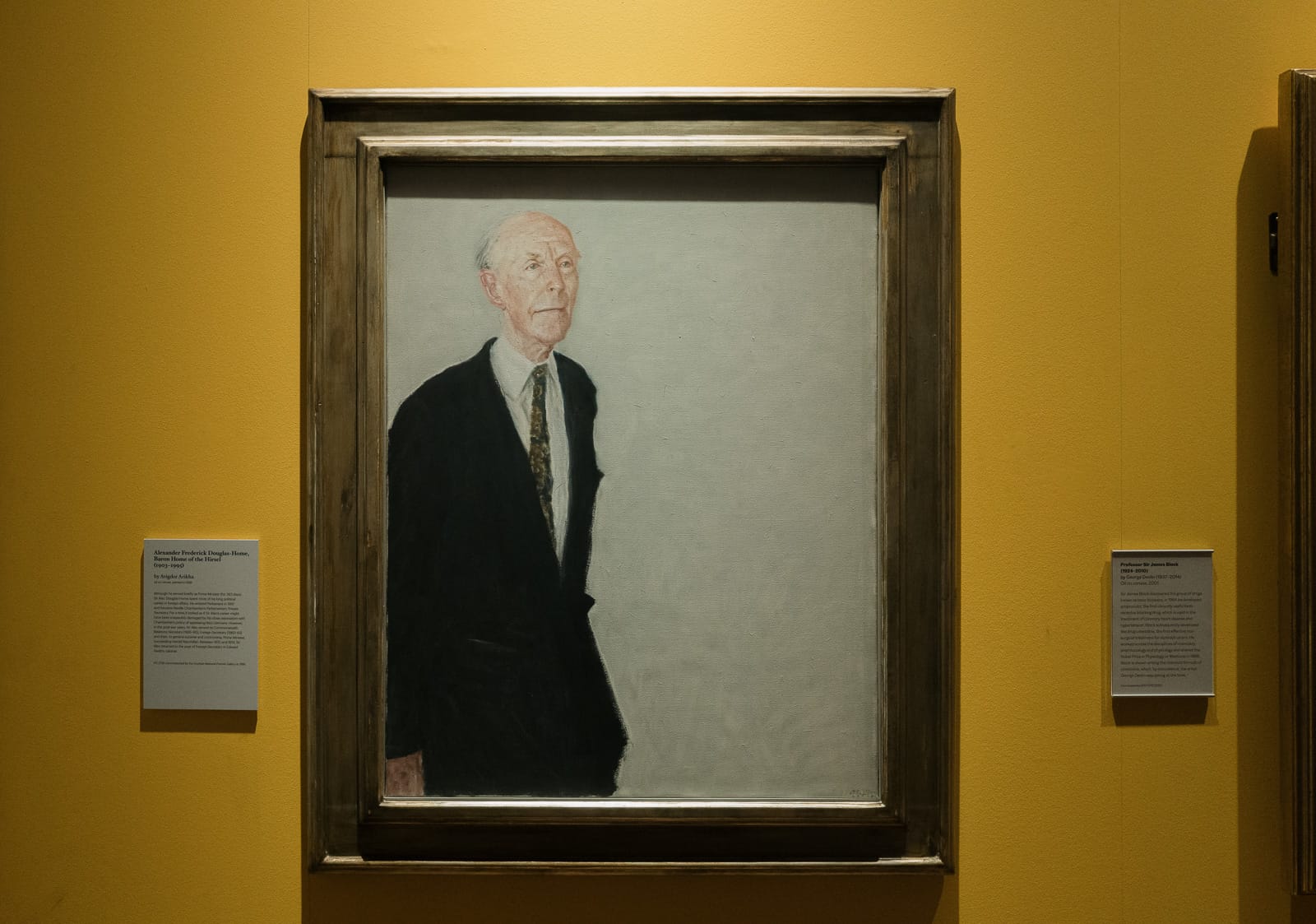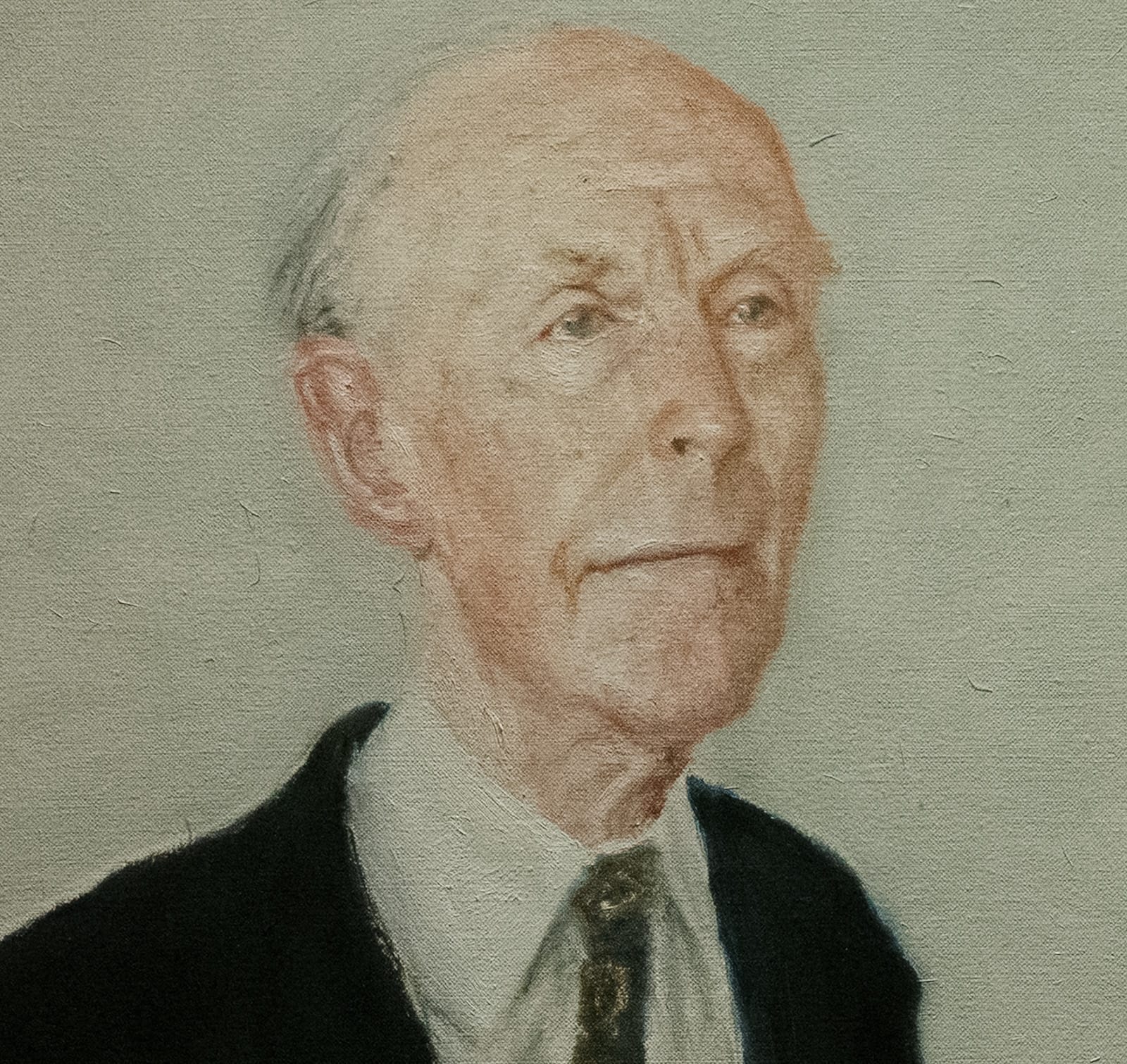When I was last in Edinburgh, I visited the Scottish National Portrait Gallery to see the '40 years of curating Scotland's photography' exhibition. The exhibition had some exceptional work and explored highlights from the nation's world-class collection of over 55,000 photographs.
I decided to wander around the rest of the gallery in that wistful wandering way where you wish there was more. I meandered into the permanent collection and was immediately drawn to this painting of Baron Home of the Hirsel by Avigdor Arikha.

Avigdor Arikha (1929–2010) was a Romanian-born French–Israeli painter, draughtsman, printmaker, and art historian. He rose to prominence for his commitment to working strictly from life, using natural light, and completing each piece in a single sitting.
I love the compositional choice and elongated body as well as the muted colour palette. It combines to imbue the portrait with a quiet grace. Home was known as 'the quiet aristocrat of British politics' and compositionally, this captures that aristocratic diffidence. It has a remarkable and dignified presence.
The painting served as both validation and reward for my intention and for braving the inclement weather. It reminded me of the irreplaceable power of an original piece of art. No reproduction will ever convey the true scale of a canvas, the texture of its surface or the vibrance and saturation of its colours. These tactile elements are lost in facsimiles. This is immediately evident when you consider the Scottish Portrait Gallery's own image record which is tonally pallid and reproduces none of the tactile elements or colour nuance of the work. Reproductions flatten the experience but standing in front of the actual painting in some way collapses time when you are looking at the same surface that the artist touched.
The position of the portrait was in a highly trafficked area of the gallery so I was unable to take the time I would have liked to shoot a proper picture, so this is more of a tourist souvenir. Equally, the staging was such that directional lighting overhead was angled in such a way as to cast a deep shadow due to the depth of the frame. It automatically limited the potential of an image and detracts from the composition to a degree.
It prompted me to look into Arikha further and beyond his obituary, found this interesting production, seemingly made for the BBC in 1992.

Lord Home, better known as Alec Douglas-Home, was one of the most important Conservative statesman of the last century, whose long political career spanned over 50 years. He was Parliamentary Private Secretary to Neville Chamberlain (1869–1940), whom he accompanied to Germany in 1938 on the government's abortive attempt to appease Hitler and Mussolini. In 1963, after Harold Macmillan's resignation, Lord Home briefly became Prime Minister. The Conservatives lost the election the following year but in 1970 Home returned to the post of Foreign Secretary, which he held until 1974. With its elongated figure slipping to the side of the canvas, this image suggests the character of a man described as the 'quiet aristocrat of British politics'.



